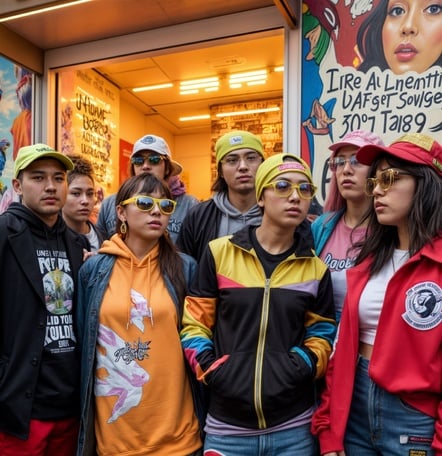New York, NY (Top40 Charts) Music merchandise has come a long way from being just trinkets sold at gigs to an extension of a musician's brand. Present merch is more than memorabilia; it includes high-fashion collaborations, eco-friendly designs, and digital collectibles. It is now an interface to connect, identify, and experience. This article will discuss some of the latest trends in the space that are reshaping the industry and how fans and artists are trying to redefine what it means to wear music.
From Merch to Movement: The New Face of Fanwear
Nowadays, fans don't just buy merch to support their favorite artists. They wear it to align with a lifestyle, community, and era. Limited edition drops, artist collaborations with high-end designers, and surprise pop-up releases make merch a highly curated experience now. While many artists are turning to platforms like Etsy and independent sellers to distribute unique pieces that feel more personal and collectible, the devil's in the details of how these platforms work and what fans should watch out for in the new economy. Many start wondering: Is Etsy reliable? You should explore the details here. There is much controversy surrounding the topic, but the information in the previously mentioned link will be your guide.
These merch launches are often eventized. This creates a sense of urgency and exclusivity that will drive demand. Fans feel part of something bigger. Hence, merch becomes a badge of honor in their identity as superfans.
The Rise of Sustainable & Ethical Merch
As fans become more environmentally and socially conscious, the demand for sustainable and ethically made merchandise is reshaping the music industry.
Eco-Friendly Materials
It's a line that many artists have been embracing: music artist merch made out of recycled fabrics, organic cotton, and biodegradable packaging. Today, water-based inks are becoming the new norm, as are plastic-free alternatives. Many further collaborate with green-certified brands to ensure their products are as kind to the planet as they are stylish.
Ethical Sourcing & Fair Labor
Materiality and provenance are two elements, but there's a growing focus on how merchandise is produced regarding transparency. Fair wages and safe working conditions are of utmost importance to many artists, with more local manufacturing and artisan collaborations being chosen. Hence, it adds cultural value while supporting ethical labor practices.
Personalized Merch
With print-on-demand services, fans can access exclusive designs without wasteful overproduction. Some artists even invite fans to submit their artwork or vote on upcoming merch drops, turning merchandise into a collaborative experience.
Digital and Immersive Merchandising
As the digital world blurs the lines between reality and virtual experience, music industry trends are expanding beyond the physical realm.
NFTs & Digital Collectibles
Non-fungible tokens (NFTs) have opened the door to virtual merch. Examples include exclusive digital wearables for metaverse avatars or limited-edition artwork that fans can truly own. Some artists are testing them, where ownership of a digital collectible entitles one to a whole series of exclusive content: VIP-only content, private streams, or even concert perks.
Augmented Reality & Virtual Try-Ons
AR changes how fans perceive merchandise for artists. Trying on clothes with your phone's camera, scanning album covers to unlock hidden content, or more; AR is turning merchandise into this cool interactive, tech-forward experience that helps deepen the engagement for fans.
Smart Merch Logistics
Behind every significant merch drop is a smart strategy that maximizes reach and excitement.
Music merchandising is now timed with album launches, tour dates, or viral moments to maximize visibility. Limited stock strategies build hype and encourage quick sales, while partnerships with fulfillment companies help streamline delivery across the globe, ensuring fans everywhere can get their hands on the goods.
Conclusion
Music merchandise companies are no longer focusing on branding. They focus on belonging. As the boundaries between fashion, fandom, and technology diminish, merch becomes a growing link between the artist and the fan. Whether it is a recycled cotton hoodie, an AR album cover, or a token digital collectible, today's merch narrates a tale of values, innovation, and community.
The future of music merchandising should be in its capability to adjust to cultural shifts while keeping a deep personal connection. As fans look for more meaningful and engaging ways to interact with their favorite artists, merch is no longer at the back of the concert hall. It is everywhere, and it is developing faster than ever. However, one fact is apparent: to wear your favorite artist is not a passive act anymore—it is a statement, an experience, and sometimes even a revolution.
























